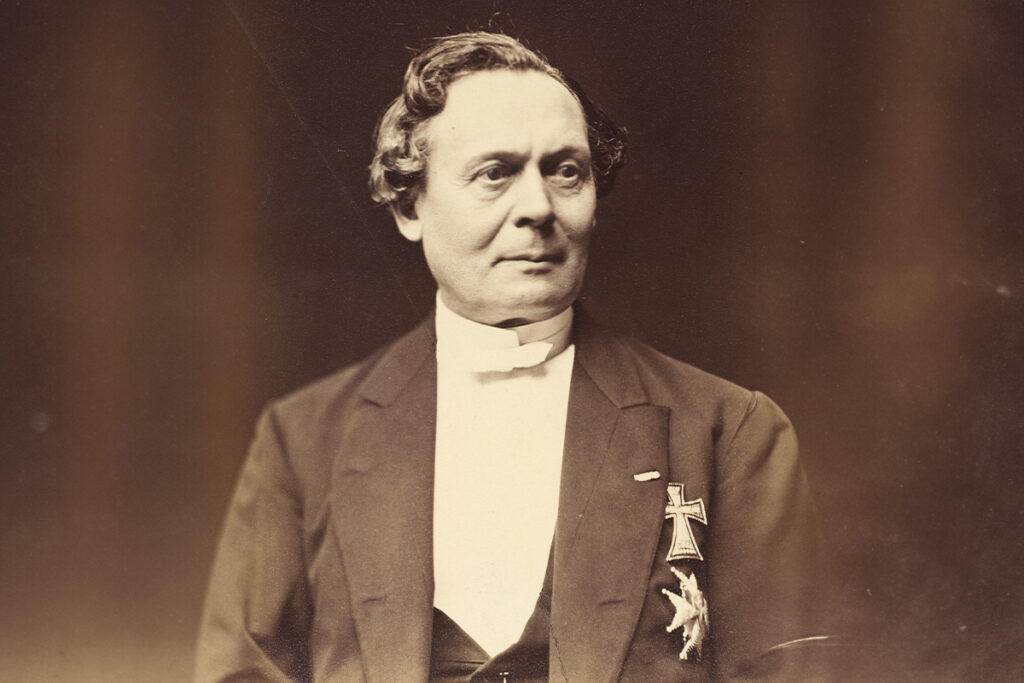
From late mediaeval times and onwards the population in Scandinavia was profoundly ashamed of their past. If we could just forget about these primitive barbarians, pre-1200, it would simply be a better world.
The neighbouring countries would be even happier not to be reminded of these inglorious times.
Through a series of stupid wars and even worse decisions Denmark and Sweden were created and divided, with ever changing borders, and Denmark lost more and more land to neighbouring countries, step-by-step being diminished to the size of a suburb.
In 1658 the richest part of the country was lost to Sweden, in 1814 the country was divided for the creation of Norway, and in 1864 the southernmost part of the country was lost to Germany.
The country was in a sad state – desperate for something to be proud of.
In 1873 archeologist and historian Jens Jacob Asmussen Worsaae published a little insignificant (and downright boring) booklet named “The Dane’s Culture in the Viking Age”.
It was a stroke of genius! The term he invented changed the world.
Just taste it: “Viking Age”!
And the word “Viking” no longer referred to “the people of the bay”, “expedition”, “pirates” or “raid”, but simply to each and every Scandinavian living in the “Viking Age”.
It was glorious!
Suddenly Danes were profoundly proud of these “primitive barbarians”. Okay, okay, we’d been unsuccessful for 7-800 years, but BEFORE that…!
About the same time, in 1876, at the first Bayreuther Festspiele production of Wagner’s “Der Ring des Nibelungen” (heavily inspired by the Norse Vǫlsunga Saga), scenographer Carl Emil Doepler was looking desperately for something to make Brünnhilde (very cute and quite overweight opera singer Amalia Materna) look more dangerous. So he took some drinking horns from the set, and glued to her helmet, and – voilá! – the hornet helmets were born.
Everybody knows this is wrong, and has no historical or archaeological connection, but what a MAGNIFICENT piece of iconography!
If you have ¼ of a seconds attention span to convince someone that something is related to “Vikings”: A hornet helmet, and Bob’s your uncle.
Back in Denmark – and Sweden, Norway and Iceland – EVERYTHING was suddenly “Viking”-something.
Kids started learning runes in schools again, and people would find runestones, dust them off, and put flowers in front of them.
Holger Danske, a statue depicting a sleeping viking, in the basement under Kronborg Castle in Elsinore, became a national icon. “He will wake up if Denmark gets in trouble!”.
During the Nazi occupation of Denmark in World War 2 the most well known resistance movement group actually named themselves “Holger Danske”.
Today, in Denmark, you can’t walk into a souvenir shop without seeing Viking figurines (complete with hornet helmets), a Danish home without cute Trolls in the window frames, and without noticing that every second child has a “Viking Age” norse name, like Erik, Holger, Astrid, Solveig, and so on.
In Icelandic the word “Viking” was used until recently as a slang term for doing a good job. It’s even used as a boy’s name in Iceland.
In the 1060s six ships were sunk on purpose in Roskilde fjord, to form a barrier and prevent enemies from entering the fjord, and in the 1960s these ships were found and excavated.
Like every other archaeological find from the “Viking Age” they were celebrated with joy. In fact: An entire museum was built for these ships!
The large runestone – erected by Harald “Bluetooth” Gormsen, in Jelling (close to Legoland) – is printed on the inside of the cover in every Danish passport.
On top there’s all the fiction (cartoons, movies, video games, open air theatre, reenactments, etc.) that has been created in recent years, inspired by Vikings, sagas, eddas, chronicles and so on.
When Swedish tech geeks came up with a technology to connect devices wirelessly they named it Bluetooth – because it’s Scandinavian, simple and connecting. The logo is the runes for H and B squeezed together. You might not have Harald Bluetooth in your heart, but you definitely have him in your phone.
But it all started with a dude named J. J. A. Worsaae, who turned shame into pride when we needed it the most, with a small book that I will not recommend you waste a single minute reading. It was the phrase on the cover that changed our little world.
